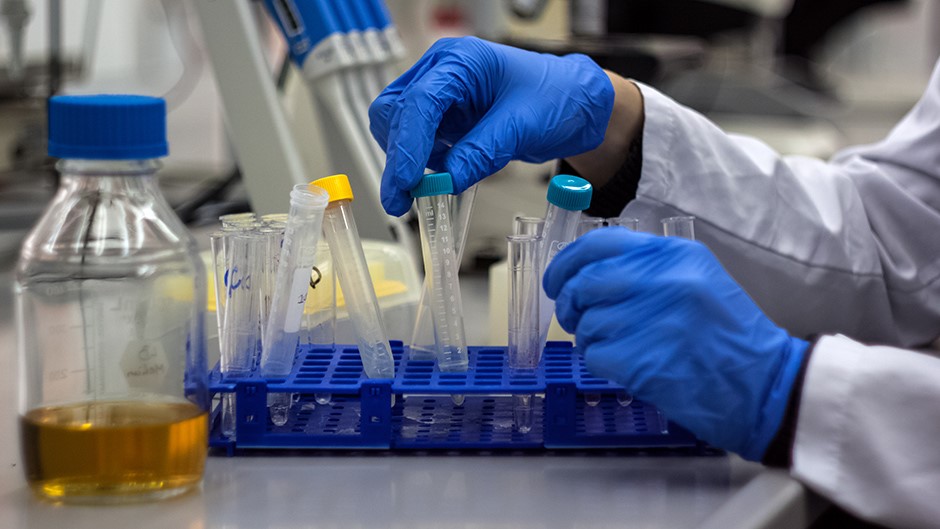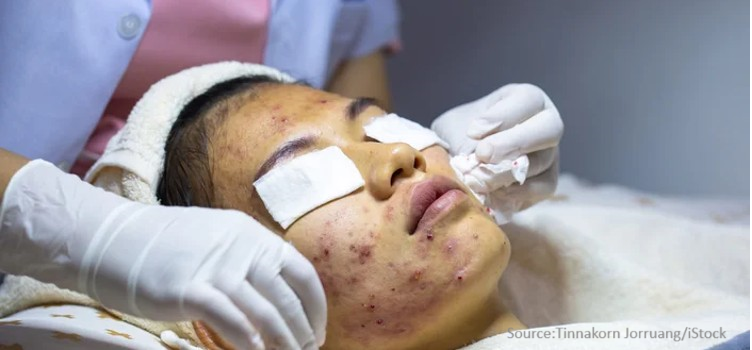
Organ Transplantation Market by Type of Transplant (Autograft, Allograft, and Others), by Product Type (Organ Preservation Products, Tissue Products, Immunosuppressive Drugs, and Others), by Application (Liver, Heart, Kidney, Pancreas, and Others), and by End Users (Hospitals and Others) – Global Opportunity Analysis and Industry Forecast 2024 – 2030
Organ Transplantation Market Overview
The global Organ Transplantation Market size was valued at USD 7.20 billion in 2023 and is predicted to reach USD 13.09 billion by 2030 with a CAGR of 8.9% from 2024-2030. Organ transplantation, also known as organ procurement, refers to the various processes that deals with the procurement, transportation and transplantation of human organs.
It involves a medical procedure where the malfunctioning organs are removed from patients and replacing them with healthy organ. This procedure aims to improve patient outcomes by facilitating successful transplant and to enhance the overall efficiency and effectiveness of the organ preservation.
The organ transplantation market growth is driven by advanced medical technologies, supportive government policies, and ongoing innovations in immunosuppressive therapies. It also involves a comprehensive examination of medical simulations, supply chain logistics, regulatory challenges, and ethical considerations within the industry.
Market Dynamics and Trends
The increasing prevalence of chronic diseases such as diabetes and cardiovascular conditions that attribute to factors such as sedentary lifestyles, unhealthy dietary habits, genetic predispositions, and aging population necessitates the organ transplantation market demand. According to the National Institutes of Health (NIH), the number of heart transplants in the U.S. is increasing since the last decade. The paediatric heart transplants have increased 31.7% to 494 and adult heart transplants have increased 85.8% to 3,668 in 2022.
The surge in heart transplants is closely linked to the uptick in chronic diseases such as cardiovascular conditions, spurred by sedentary lifestyles and unhealthy eating habits. As these ailments become more widespread, the demand for heart transplants intensifies, highlighting the broader necessity for organ transplantation amidst the growing burden of chronic illnesses.
Additionally, the rising government initiatives such as provision for providing financial support, imparting training to doctors and transplant coordinators, and others boost the growth of organ procurement market. According to the U.S. Health Resources and Services Administration (HRSA), the U.S., HRSA collaborated with Congress to secure an investment of USD 23 million funding to boost the Organ Procurement and Transplantation Network (OPTN) modernization initiative, enhancing its progress. The modernization of the Organ Procurement and Transplantation Network (OPTN) is driving the market by enhancing infrastructure and outcomes.
Moreover, in 2022, the Ministry of Health and Family Welfare, India, established an apex-level National Organ and Tissue Transplant Organization (NOTTO) in New Delhi, along with five Regional Organ and Tissue Transplant Organizations (ROTTOs) and sixteen State Organ and Tissue Transplant Organizations (SOTTOs) across the nation, aiming to assist patients requiring organ transplants. India's establishment of NOTTO, ROTTOs, and SOTTOs is boosting the demand for organ transplantation through enhanced national coordination and efficiency.
Furthermore, the growing aging population is propelling the organ transplantation market expansion due to age-related organ failures and the prevalence of chronic diseases that necessitate transplantation as a treatment option. According to United Nations (UN), the percentage of the global population aged 65 and above is projected to rise from 10% in 2022 to 16% in 2050 globally.
However, the high costs and complexities associated with organ transplantation procedures hinders the accessibility of transplantation services and growth of the industry. On the contrary, the introduction of advanced technology such as three dimensional bioprinting, decellularization and recellularization in organ transplantation surgery is expected to create ample growth opportunity for the market.
In July 2022, CD Bioparticles introduced a new series of bioinks tailored for 3D bioprinting. These bioinks are engineered to be biocompatible and versatile, making them suitable for various applications such as constructing and cultivating 3D biological models, tissue engineering, and drug delivery systems.
Market Segmentations and Scope of the Study
The organ transplantation market report is segmented on the basis of type of transplant, product type, application, end user and region. Based on type of transplant, the global market is divided into autograft, allograft and others. Based on product type, the market is segmented into organ preservation, tissue products, immunosuppressive drugs and others. Based on application, the market is segmented into liver, heart, kidney, pancreas and others. On the basis of end users, it is categorised into hospitals, and others. Regional breakdown and analysis of each of the aforesaid segments includes regions comprising of North America, Europe, Asia-Pacific, and RoW.
Geographical Analysis
North America dominates the organ transplantation market share during the forecast period. This is attributed to factors such as growing elderly population which emphasis on the concerns such as management of chronic diseases and age-related conditions. According to the U.S. Department of Health and Human Services February 2024, an estimated 129 million people in the country have at least 1 major chronic disease such as heart disease, cancer, diabetes, obesity, and hypertension.
Also, the introduction of various programs such as Living Organ Donation (LOD), Donation after Brain Death (DBD), enhance the industry by boosting organ availability, refining infrastructure, fostering technological progress, heightening public awareness, and securing government backing those fuels the market growth and evolution.
As per the U.S. Organ Procurement and Transplantation Network (OPTN) report 2024, there were 46,632 organ transplants performed from both living and deceased donors in 2023. This represents an 8.7% increase over 2022 and a 12.7% increase over 2021, which was the first year with more than 40,000 organ transplants.
The increasing demand for organ transplants driven by chronic diseases and aging populations, alongside advancements in donor registration and medical technology, is driving growth in the organ transplantation market. Moreover, the leading market players including Arthrex Inc., Biolife Solutions, and others are driving market growth through adopting various business strategies such as product launches, collaborations, and acquisitions across the region.
For instance, in January 2024, United Therapeutics Corporation launched the transplantation of the world's first UThymoKidney into a living human recipient, leading to a significant surge in the company's growth and contributing to the expansion of the organ transplantation market. On the other hand, Asia-Pacific region is experiencing robust growth in organ donor rates refining surgical techniques, and bolstering healthcare infrastructure that fuels the growth of the organ transplantation industry.
As per the China Organ Donation Administrative Center, over 6.71 million people in China have registered as organ and body donation volunteers till March 2024. In addition, according to the Gansu Branch of the Red Cross Society of China, the province had only 80 registered donors before 2014, but this number increased to 112,000 by the end of 2023.
Furthermore, the increasing prevalence of chronic diseases such as cardiovascular diseases (CVD) and chronic kidney diseases (CKD) fuels the growth of organ transplantation as a treatment option in this region. According to the National Institutes of Health (NIH), the number of CKD patients in China is projected to rise from 153 million in 2020 to 165 million by 2025, exceeding 10% of the population.The rise in CKD cases heightens the demand for kidney transplants, worsening donor shortages and driving up costs. This growing requirement increases the investments in organ procurement and innovative treatments that transforms the organ transplantation industry.
Competitive Landscape
Various market players operating in the organ transplantation industry includes AbbVie Inc., BioLife Solutions Inc, Medtronic plc, Arthrex Inc., Zimmer Biomet Holdings Inc., 21st Century Medicine, Novartis AG, Stryker Corporation, Teva Pharmaceutical Industries Ltd., Veloxis Pharmaceuticals, Inc., and others. These companies are opting various strategies such as product launches and acquisition to maintain their dominance in the market.
For instances, in May 2024, Novartis AG, a subsidiary of the Swiss pharmaceutical company, acquired MorphoSys AG that helps to expand its presence in the region and enhancing its market dominance.
Also, in May 2024, Veloxis Pharmaceuticals introduced new research on VEL-101, an immunosuppressive agent, at the American Transplant Congress. This presentation highlighted the potential of VEL-101 to significantly enhance the quality of organ transplants, leading to improved patient outcomes and increased market demand.
Moreover, in April 2023, Medtronic launched Mozarc Medical, a new company focused on improving kidney health and patient-centered technology. Mozarc Medical combines Medtronic's former renal care solutions business with other industry experts to drive innovation and advance its mission, contributing to the company's growth in the organ transplantation market.
Key Benefits
-
The report provides quantitative analysis and estimations of the organ transplantation market from 2024 to 2030, which assists in identifying the prevailing industry opportunities.
-
The study comprises a deep-dive analysis of the current and future organ transplantation market trends to depict prevalent investment pockets in the industry.
-
Information related to key drivers, restraints, and opportunities and their impact on the market is provided in the report.
-
Competitive analysis of the players, along with their market share is provided in the report.
-
SWOT analysis and Porters Five Forces model is elaborated in the study.
-
Value chain analysis in the market study provides a clear picture of roles of stakeholders.
Organ Transplantation Key Market Segments
By Type of Transplant
-
Autograft
-
Allograft
-
Others
By Product Type
-
Organ Preservation Products
-
Tissue Products
-
Immunosuppressive Drugs
-
Others
By Application
-
Liver
-
Kidney
-
Heart
-
Pancreas
-
Others
-
By End Users
-
Hospitals
-
Others
By Region
-
North America
-
The U.S.
-
Canada
-
Mexico
-
-
Europe
-
The UK
-
Germany
-
France
-
Italy
-
Spain
-
Denmark
-
Netherlands
-
Finland
-
Sweden
-
Norway
-
Russia
-
Rest of Europe
-
-
Asia-Pacific
-
China
-
Japan
-
India
-
South Korea
-
Australia
-
Indonesia
-
Singapore
-
Taiwan
-
Thailand
-
Rest of Asia-Pacific
-
-
RoW
-
Latin America
-
Middle East
-
Africa
-
REPORT SCOPE AND SEGMENTATION:
|
Parameters |
Details |
|
Market Size in 2023 |
USD 7.20 Billion |
|
Revenue Forecast in 2030 |
USD 13.09 Billion |
|
Growth Rate |
CAGR of 8.9% from 2024 to 2030 |
|
Analysis Period |
2023–2030 |
|
Base Year Considered |
2023 |
|
Forecast Period |
2024–2030 |
|
Market Size Estimation |
Billion (USD) |
|
Growth Factors |
|
|
Countries Covered |
28 |
|
Companies Profiled |
10 |
|
Market Share |
Available for 10 companies |
|
Customization Scope |
Free customization (equivalent to up to 80 working hours of analysts) after purchase. Addition or alteration to country, regional, and segment scope. |
|
Pricing and Purchase Options |
Avail customized purchase options to meet your exact research needs. |
Key Players
-
AbbVie Inc.
-
BioLife Solutions Inc.
-
Medtronic plc
-
Arthrex Inc.
-
Zimmer Biomet Holdings Inc.
-
21st Century Medicine
-
Novartis AG
-
Stryker Corporation
-
Teva Pharmaceutical Industries Ltd.
-
Veloxis Pharmaceuticals, Inc.




 Speak to Our Analyst
Speak to Our Analyst

































